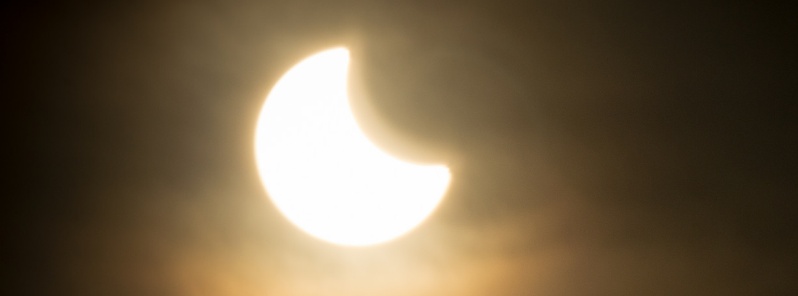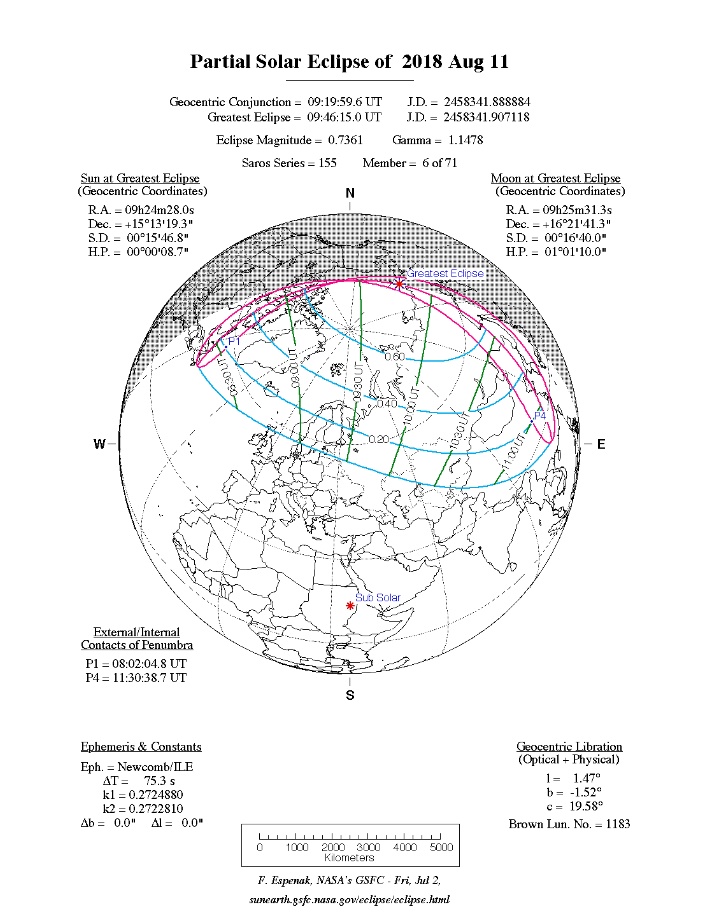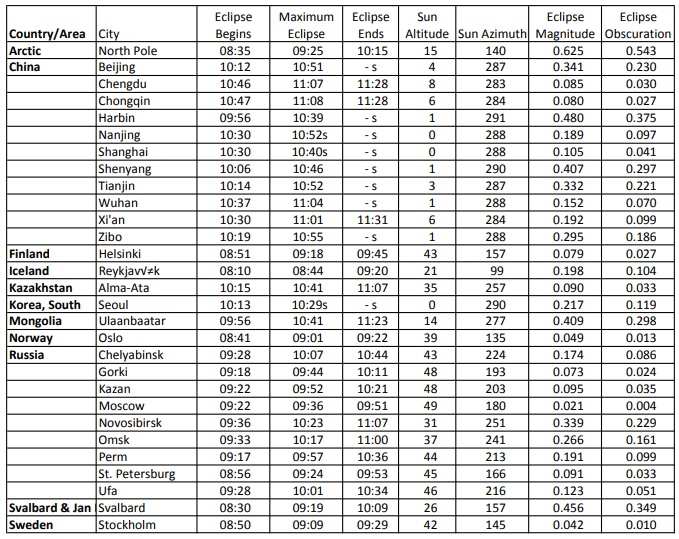Partial solar eclipse of August 11, 2018

A partial solar eclipse will take place from 06:40 to 12:38 UTC on August 11, 2018. While it will be visible in parts of northeast Canada, Greenland, extreme northern Europe, and northern and eastern Asia, the best place to see it will be northern Russia with 68% coverage.
A partial solar eclipse occurs when the Moon covers only a part of the Sun, sometimes resembling a bite taken out of a cookie. During these events, the Sun, Moon and Earth are aligned in an almost exact straight line, with the Moon in the middle, such that the Moon passes in front of the Sun.
This is the third partial solar eclipse and the last solar eclipse of the year. It occurs in Leo at the Moon's ascending node and belongs to Saros 155 (number 6 of 71 eclipses in the series). All eclipses in the series occur at the Moon's ascending node. The Moon moves southward with respect to the node with each succeeding eclipse in the series and gamma decreases, eclipse specialist Fred Espenak noted.

Local circumstances and eclipse times for a number of cities in Europe and Asia are listed in table below. The Sun's altitude and azimuth, the eclipse magnitude and eclipse obscuration are all given at the instant of maximum eclipse. When the eclipse is in progress at sunset, this information is indicated by '– s'.

All times are Universal Time. Courtesy of Fred Espenak,"Eclipses During 2018", 2018 Observer's Handbook, Royal Astronomical Society Of Canada.
The event is visible from the Northern Hemisphere and includes northeastern Canada, Greenland, Iceland, Northern Europe, north and eastern Asia. At greatest eclipse (09:46 UTC), the magnitude is 0.7368.
The next partial solar eclipse will take place on January 6, 2018.
Observing the Sun can be very dangerous if it is not done with the right equipment. The Sun is the brightest object in the sky, and looking directly at it can cause permanent eye damage within seconds. Viewing it through any optical instrument, even a pair of binoculars or the finderscope on the side of your telescope can cause instant and permanent blindness.
Featured image credit: Chris Cummings

Commenting rules and guidelines
We value the thoughts and opinions of our readers and welcome healthy discussions on our website. In order to maintain a respectful and positive community, we ask that all commenters follow these rules.